If you’re still getting your electricity from SP Group, here’s a PSA:
Given that switching can be done in a few minutes and even online without any electricity disruption, there’s little reason for you to stick to SP Group anymore. There’s no rewards for being loyal, you guys!
I’ll go through how to pick the plan most suited to your household consumption in this article for greater savings.
Background: What’s happening?
We all know by now that when there’s a monopoly on prices, consumers are usually left worse off in the form of higher prices and no alternatives to turn to. That has been the case in the Singapore electricity market for the longest time.
But not anymore!
With the launch of the Open Electricity Market, we consumers can now buy direct from the retailers and mostly at a much lower price as well. We’ve been paying close to 25 cents per kWh of electricity to SP Group in the past few months, so it made sense to switch to a direct retailer instead since we will pretty much be getting guaranteed cost savings regardless.
The question was, which electricity provider should we choose?
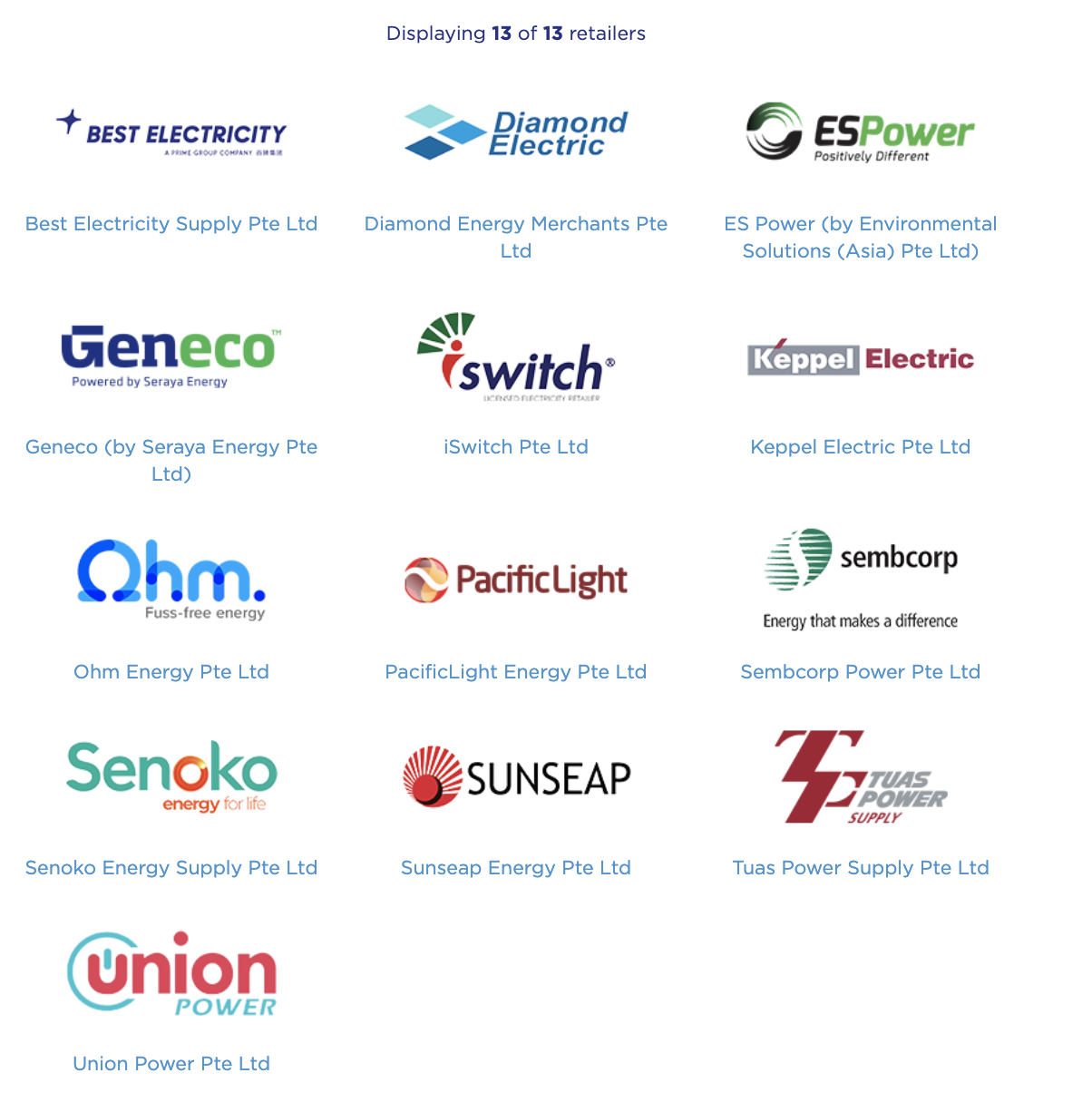
Note that some retailers (like Geneco) get their power from parent companies which are power generators, whereas others are pure retailers who purchase electricity from the wholesale electricity market and then sell it back to us consumers.
Step 1: Review your recent electricity bills
We consolidated our past 4 months of electricity bills to check what was our average monthly consumption (kWh). Although SP Group offers an average consumption guide online here, it is tagged to household size and may not be an accurate indication of how much YOUR household is actually consuming. In our case, SP Group’s table estimates was extremely off our actual kWh consumed each month.
You can also compare both plans based on your average household consumption here on the Open Electricity Market website.
Step 2: Decide on the type of plan
There are 13 authorised electricity retailers to choose from, which makes it hard to compare them all! Hence, an easier way would be to decide on which type of plan is more suitable for you:
Fixed price plans are the best if you prefer a constant price of electricity, which makes it easier to calculate (and estimate) your monthly bills, because you simply pay a fixed fee per kWh consumed. At the moment, all of the retailers’ prices are lower than SP Group’s but this may change if the price of electricity tariffs go down.
The fixed price plans currently range from $0.1762 to $0.2301 per kWh.
Discount off the regulated tariff plans are basically a fluctuating price that is pegged to the regulated tariff i.e. electricity cost in Singapore. This means that you will always be paying less than what SP Group charges, but your bill could be higher or lower each month based on the prevailing tariff rates. The tariffs change every quarter and can be tracked here.
Most retailers are offering a 21 to 23% discount for these plans.
Step 3: Look out for hidden fees
Some retailers charge a lower price but sneakily get you to pay more in other forms instead. Here are some of the hidden types of fees you should be looking out in your contract before you sign:
1. TLF charges
The Transmission Loss Factor (TLF) charges refer to the cost of the electricity lost while it is being delivered to your house, as it goes through a network of system and some of the energy is lost in the form of heat or more. This means that as the consumer, you’ll be actually paying for less electricity than what you’re using because those TLF losses are being charged to you as well.
Previous retailers who passed these TLF charges to consumers include Keppel Electricity, Pacific Light, Sembcorp Power and Sembcorp Energy.
2. MDSC charges
(Update 10 May 2019: an iSwitch representative has since clarified that they do not charge MDSC. Hooray!)
3. Security Deposit
- PacificLight
- Diamond Electric
- Best Electricity Supply Pte Ltd
- Sembcorp Power
- Keppel Electric (waived for Singaporeans and PRs)
If you switch to a retailer who isn’t using SP’s bill, note that you will get a refund of 65% of your security deposit with SP Group when you switch.
4. Paper bills
If you wish to continue having a paper bill, some retailers charge additional for the service. They include:
- Sembcorp Power ($1 per bill)
- iSwitch ($1.07 per bill)
- Keppel Electric ($1.07 per bill)
- Senoko Energy ($1.605 per bill)
- Sunseap Energy ($1.60 per bill)
5. Any other additional fees
iSwitch, for instance, has a $4.95 monthly fee before GST for some of their non-standard contracts. You’ll definitely want to factor that in.
When you review your contract, also pay close attention to the payment terms, early termination charges and auto-renewal clauses before you sign.
Step 4: Sign-up Bonuses
Some others offer credit card tie-ups to help you save more on your electricity bill when you pay through a preferred vendor.
Step 5: Choose a sustainable retailer
TLDR Final Thoughts
WHAT I EVENTUALLY DECIDED ON
Geneco’s Fixed Price Plan @ $0.1778 per kWh for a two-year contract
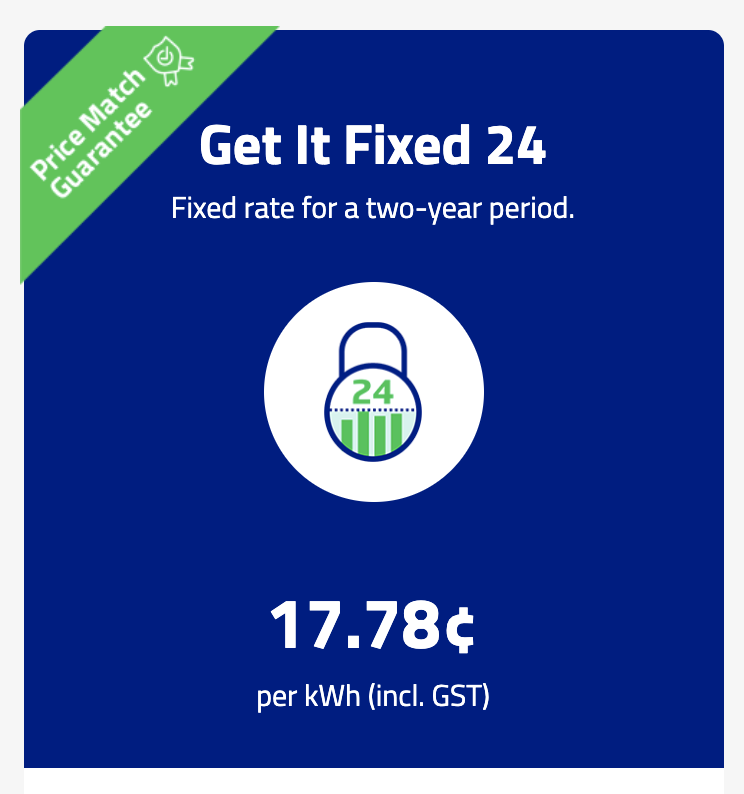
Reasons:
- Our guess is that electricity prices will probably go up in the long run, so a fixed-rate plan makes more sense to us. There’s also less doubt (I’m not keen on having to study our bills every quarter to find out how come we’re paying so much more this month out of the blue).
Cost-wise, Geneco offers the lowest plan for us. Among all the fixed 12/24 months plans, they’re the cheapest at $0.1778 (iSwitch charges the lowest electricity fee at $0.1755 BUT has a monthly service fee, so based on our consumptions that erodes our savings margin). - It comes with a price match guarantee.
- I don’t have to worry about them closing down as their parent company, YTL PowerSeraya, is one of the largest electricity generators in Singapore and has been powering the nation for over 48 years.
- I can get a $78 + $20 rebate (using a friend’s referral code) upfront.
- I can get additional 1% cashback by paying via either my UOB (first 12 months) or POSB Everyday Card (both of which we have).
- No hidden fees. I don’t have to pay for any monthly charges, security deposit, transmission loss fees, nor do I need to get a new meter installation.
- I don’t need and don’t want paper bills (go green, anyone?).
- There’s a PowerUp rewards scheme with discounts at various merchants for subscribers.
P.S. If you don’t have a friend’s referral code for the $20 off and would like mine, feel free to message me on Instagram for it 🙂
*** SPONSORED MESSAGE ***
Switch to one of Singapore’s leading electricity retailers today and see your electricity bill drop by as much as 25% the following month! With no hidden fees, you won’t have to worry about extra charges other than what you’re consuming.
Get up to $138 when you sign up with Geneco! Simply stack the following:
- Use promo code “GET78” to enjoy a one-time $78 bill rebate (applicable for our 18/24/36 months plans, limited to first 5,000 sign-ups as of May 1st, 2019)
- Get an additional $20 bill rebate with your friend’s referral code
- Charge a recurring payment from May onwards to your credit card
- OCBC: $40 rebate
- AMEX: $40 rebate
- UOB: 1% for 12 months
- POSB: 1% throughout your contract term
Choose from a fixed-price plan or a discounted plan. Whatever your needs, we’ve got the plan for you! You can also take this quiz on our website to match our best plans to your consumption patterns. With our price-match guarantee, you can be rest assured that you’ll be getting the lowest rate, or we’ll match it for you!
What’s more, stand to win $100 Geneco rebates (for new sign-ups only) on our Instagram contest today! Head over here to participate.


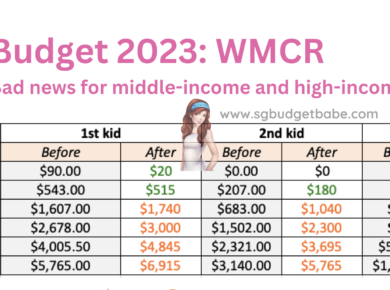
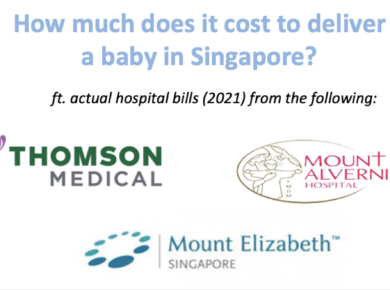
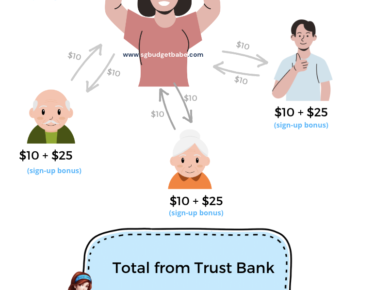
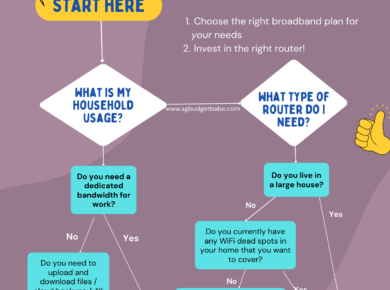
1 comment
This comment has been removed by a blog administrator.
Comments are closed.